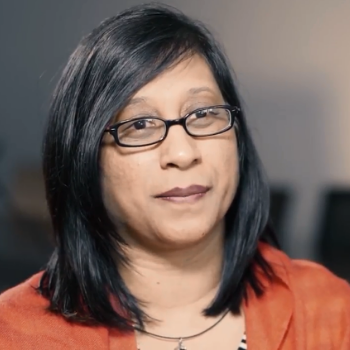SUCCESSFUL COLLABORATIVE PARTNERSHIPS BETWEEN GOVERNMENT AND NGOS IN ADVANCING EIDM SOUTH AFRICA, IS POSSIBLE
Barriers that previously existed in building effective collaborative partnerships within Government; between Government and academia; and between Government and international actors are slowly but surely being overcome
by Harsha Dayal
Building lasting relationships from the government perspective
Collaboration and building lasting relationships is probably the single most important strategy for producers, intermediaries and ultimate users of evidence, to effect change. Within Government, collaborative partnerships are critical in policy development as well as effective service delivery.
The Department of Planning, Monitoring and Evaluation (DPME) in the South African Government nurtures these collaborative partnerships through coordinated stakeholder engagements with all relevant societal groups. These groups include citizens/civil society, unions, academia, private sector, business, and international actors. However, collaborative activities and strategies are more often dependent on a number of factors. These include among others - the issue at stake, its timing, level of consultation, and who is actually involved in the relationship. For this reason, the task of documenting the varied experiences in successful collaboration stories provides the basis of identifying trends, good practices and transferable lessons across sectors and contexts.
Collaborations are necessary for coherence & coordination towards common goals
In my experience of working as a researcher in the DPME, I draw on three different cases to illustrate how collaborative activities differ- and for which creativity and thinking out-of-the-box is a core driver.
Case 1: Leveraging established social capital to advance the use of findings from a critical research report
As within academia, Government operates according to clear lines of authority and communication Adherence to these lines is designed to maintain order and a sense of organizational standing. However, navigating these structures to find the right person to work with, is time consuming and often leads to long drawn out processes that may not be productive.
Here I share my personal experience in dealing with a high-level official to advance the use of findings from a research report of high socio-political interest. Foregoing the usual bureaucratic channels, I took a leap of faith in directly contacting a high-level authority due to an existing deep and mutually beneficial relationship during the research process. We quickly developed a plan of action and commitment by policy makers to ensure that evidence generated in the report will be taken up further. This type of collaboration is often overlooked given the fact that it depends on person-to-person interaction, based on trust and professionalism.
Case 2: Mutually beneficial long-term relationships lead to successful collaboration
The DPME and the Africa Centre for Evidence (ACE) collaborated in the production of an evidence map during a high-level policy review process in addressing the challenges of land reform in South Africa. We did not have sufficient time to follow formal communication procedures and develop the specifications of a joint team, nor the luxury of capacity development to work on evidence synthesis.
As a result of long-term relationship between the DPME and ACE, where both organisations kept pace with methodological developments, used available time constructively in cultivating a mutually beneficial relationship, and invested in building networks over the years. As a result, the collaboration was able to “hit the ground running” in order to deliver quality, timely, relevant and rigorous evidence synthesis products, in response to policy maker’s needs. This type of collaboration was acknowledged in publicly available reports, and depended on team-team collaboration between Government and Academia.
Case 3: Effective international networking between DPME and key leaders in the field of evidence synthesis and rapid responses.
Here, the linkages made by ACE with ACRES in Uganda and McMaster University in Canada was the start of a long term collaborative engagement in capacity building workshops, sharing of methods, and mutually beneficial learning exchanges. This would not have been possible without the expert networking skills by ACE. This type of collaboration is dependent on Government-Academia and International partners. To date, these relationships are not only sustained, but growing in strength and influence.
While there are also efforts in building relationships that did not proceed as intended, we soon realised that they would provide us with lessons in relationship building. By illustrating the cases above, we get to identify individuals who remain committed to a cause with shared values and principles over the years. Lastly, we get to identify those with the core motive of ensuring social justice and serving the broader global good in implementing EIDM.
In a nutshell…
Barriers that previously existed in building effective collaborative partnerships within Government; between Government and academia; and between Government and international actors are slowly but surely being overcome, by investing in people, working creatively and innovatively and recognizing who adds value to a long-term collaborative partnership.
Harsha Dayal currently works as the Director of Research in the Department of Planning Monitoring and Evaluation (DPME), within the Presidency of South Africa. She is championing evidence synthesis as a methodology for building public sector capacity, has facilitated effective use of research and other evidence, and is developing a responsive knowledge-brokering service to meet the demand for quality evidence by decision makers.
